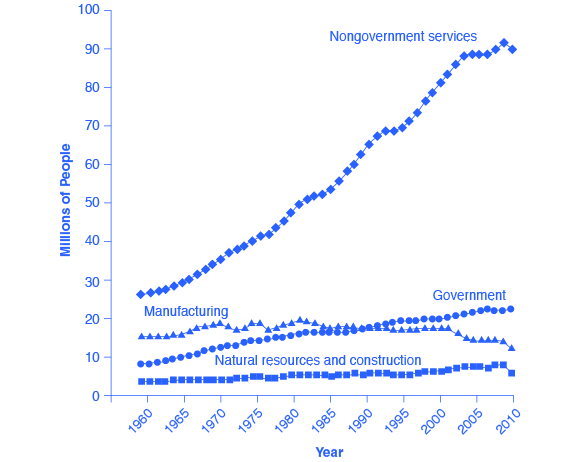| << Chapter < Page | Chapter >> Page > |
In other instances, unions have proved quite willing to adopt new technologies. In one prominent example, during the 1950s and 1960s, the United Mineworkers union demanded that mining companies install labor-saving machinery in the mines. The mineworkers’ union realized that over time, the new machines would reduce the number of jobs in the mines, but the union leaders also knew that the mine owners would have to pay higher wages if the workers became more productive, and mechanization was a necessary step toward greater productivity.
In fact, in some cases union workers may be more willing to accept new technology than nonunion workers, because the union workers believe that the union will negotiate to protect their jobs and wages, whereas nonunion workers may be more concerned that the new technology will replace their jobs. In addition, union workers, who typically have higher job market experience and training, are likely to suffer less and benefit more than non-union workers from the introduction of new technology. Overall, it is hard to make a definitive case that union workers as a group are always either more or less welcoming to new technology than are nonunion workers.
The proportion of U.S. workers belonging to unions has declined dramatically since the early 1950s. Economists have offered a number of possible explanations:
Let’s discuss each of these four explanations in more detail.
A first possible explanation for the decline in the share of U.S. workers belonging to unions involves the patterns of job growth in the manufacturing and service sectors of the economy shown in [link] . The U.S. economy had about 15 million manufacturing jobs in 1960. This total rose to 19 million by the late 1970s and then declined to 17 million in 2013. Meanwhile, the number of jobs in service industries and in government combined rose from 35 million in 1960 to over 118 million by 2013, according to the Bureau of Labor Statistics. Because over time unions were stronger in manufacturing than in service industries, the growth in jobs was not happening where the unions were. It is interesting to note that several of the biggest unions in the country are made up of government workers, including the American Federation of State , County and Municipal Employees (AFSCME) ; the Service Employees International Union ; and the National Education Association . The membership of each of these unions is listed in [link] . Outside of government employees, however, unions have not had great success in organizing the service sector.


Notification Switch
Would you like to follow the 'Principles of economics' conversation and receive update notifications?